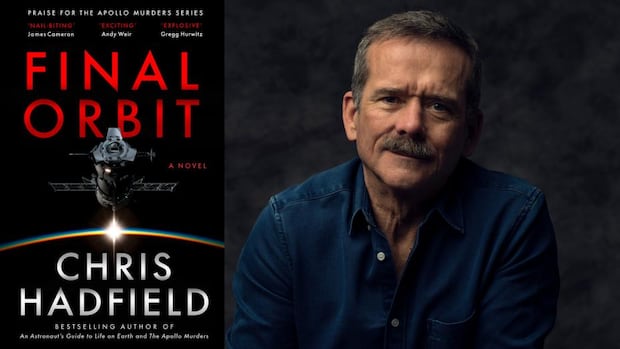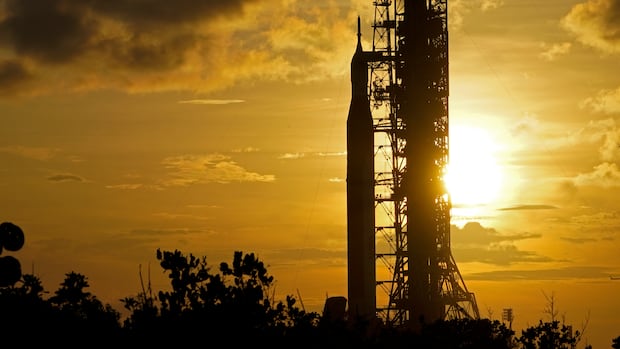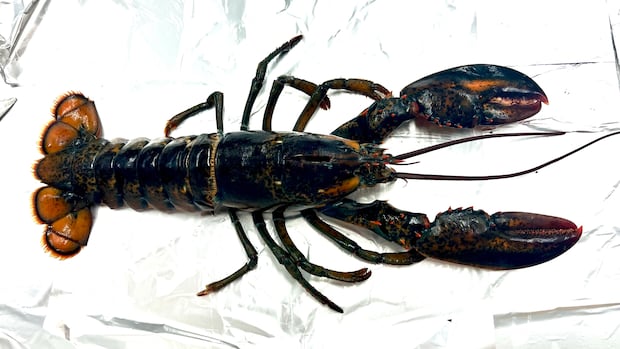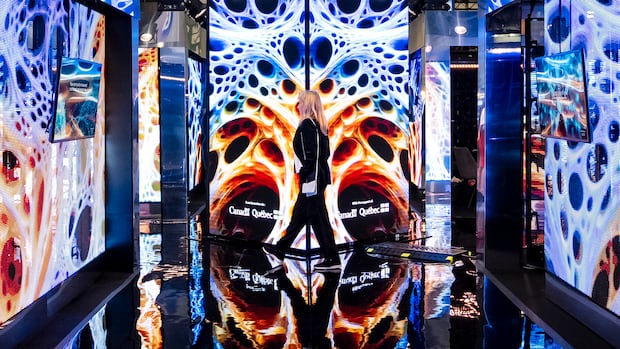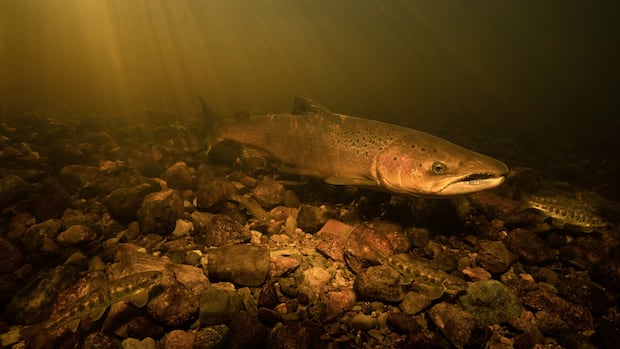What does one do when returning to Earth after three trips to space?
That’s a question Canadian astronaut Chris Hadfield faced upon landing his final mission.
“You sort of emerge almost newborn out of that ship,” said Hadfield on an episode of Bookends with Mattea Roach.
“It's a really good moment to take stock and think, ‘What do I want to do now? What excites me and thrills me and what challenges me?’ And maybe, more importantly, ‘What is it that I want to accomplish?’”
One of those things was writing a book. And Hadfield has done it — many times over.
His work includes nonfiction, children's books and most recently, three fast-paced thrillers based on his adventures in space, called The Apollo Murders series.
Final Orbit is the latest in the collection, and it's set in 1975 during the Cold War when the United States and the Soviet Union were in a space race.
Hadfield joined Roach to discuss his transition from astronaut to author and the real-life stories and research that colour his fiction.
WATCH | Chris Hadfield on Bookends with Mattea Roach:
Mattea Roach: Why was being an author always part of the plan for post-astronaut life?
Chris Hadfield: It was my favorite subject in school. It was the thing I had the most intuitive knack for. I loved reading. I loved writing. I wrote poetry. I wrote short stories. I wrote a book of limericks. I just found the study of language and the manipulation of language and the ability to share ideas through the written word really interesting. It's where I learned most of the things that I knew.
I knew if I did an English lit degree, they wouldn't let me command a spaceship.- Chris HadfieldSo, I always wanted to write, but I knew if I did an English lit degree, they wouldn't let me command a spaceship. So, I just deferred it.
 Canadian astronaut Chris Hadfield, gestures shortly after the landing of the Russian Soyuz TMA-07 space capsule on May 14, 2013. This was his last mission to space before his retirement. (The Associated Press)
Canadian astronaut Chris Hadfield, gestures shortly after the landing of the Russian Soyuz TMA-07 space capsule on May 14, 2013. This was his last mission to space before his retirement. (The Associated Press)Final Orbit is set in July 1975 during a real joint mission between the U.S. and the Soviet Union. What went into that mission taking place and what's the long tail of it?
It came out of slow backroom conversations between Soviet upper level personnel and American upper level personnel. It took five years of work led by Glynn Lunney of NASA, who figures in the book, and a whole host of other people, who had to figure out how to dock two ships together that don't have compatible docking mechanisms.
How do you communicate when we don't use the same frequencies or languages? And how is Mission Control in Moscow going to talk to Mission Control in the U.S.

That was complicated enough, but so was the shift of geopolitics and purpose and convincing all the people and all the various levels that this was a worthwhile endeavor.
Eventually we just decided simply on a Soyuz and Apollo docking together. They chose extremely experienced crews on both sides and managed, in July of 75, to successfully dock and undock and demonstrate that even in times of darkness, there are rays of light.
I want to talk about this main character who appears throughout the series, Kaz Zemeckis. He's a flight controller and lost an eye from a collision with a bird while flying a plane. Can you share the stories, one that happened to you and one that happened to your friend, that inspired that accident?
I was a test pilot. Every airplane anybody ever flies in has been tested thousands of times by an especially qualified and trained type of pilot.
One of the things we were testing on an airplane was the way it senses speed and altitude. One of the ways you do that, it sounds pretty weird, but you fly at an exact altitude above the water. At first, you go 200 knots and then 250, then 300. You go by a little sighting tower and the technicians in the sighting tower watch you come by and at that moment, you record what all your instruments show and they record what was happening externally, and from that they can then calibrate your whole system. So it's old fashioned, but it works. It's called a tower flyby.
I was doing the top speed tower flyby, 550 knots, so nine miles a minute. As I hit the first tower, I see something in my windscreen in the distance in my heads up display. I then realized it was a seagull. I'm going 550 knots, covering speed like you can hardly even understand.
 Canadian astronaut Chris Hadfield, right, flies a F-86 Sabre 5 vintage aircraft, following a CF18 Hornet and a Tutor jet during a flypast for the centennial of aviation on Sept. 15, 2009 over Quebec City. (The Canadian Press)
Canadian astronaut Chris Hadfield, right, flies a F-86 Sabre 5 vintage aircraft, following a CF18 Hornet and a Tutor jet during a flypast for the centennial of aviation on Sept. 15, 2009 over Quebec City. (The Canadian Press)Just as I was about to hit the seagull, it made the fatal mistake of diving, which would work for most things, but not an F-18 going that fast, and it tucked its wings. Rather than have it come directly through my windscreen, which was going to happen, I just flinched the airplane to the right and I heard it bang off the side somewhere on my airplane. I thought it went down my left engine.
So what do you do now? I pulled my left engine idle, zoomed up because I had all this speed. So I get up nice and high, declared an emergency, came around, went back, landed on the runway.
A friend of mine flying under similar circumstances got hit by a bird. It came through the windscreen and actually smashed into his face and took out his left eye. And he then had to cover his eye and turn his head so the wind blast would blow the blood out of his good eye so he could see the ground well enough to be able to land. And he managed to get his airplane back on the ground. His call sign was cyclops from then on.
I took his story and then I took my F-18 story and I combined the two of them in order to injure Kaz and set him up for the rest of the series.
This interview has been edited for length and clarity. It was produced by Alicia Cox Thomson, with thanks to Sarah Cooper.


